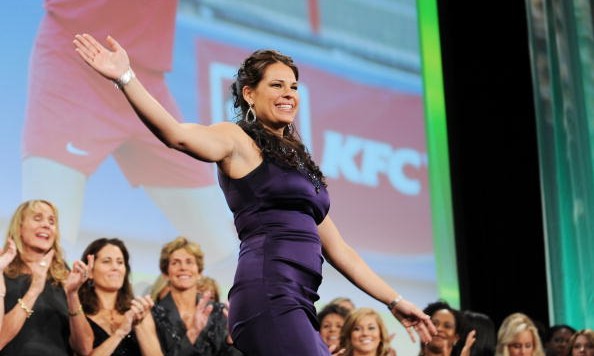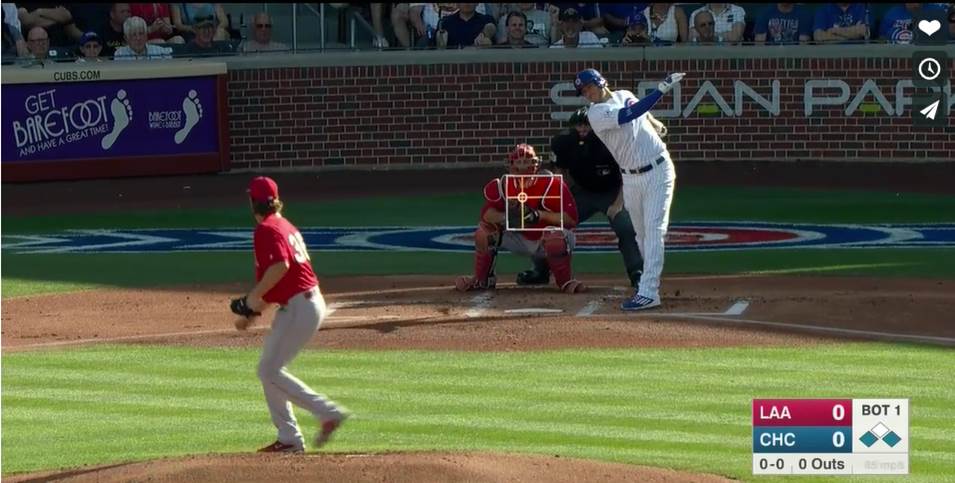ESPN’s 2015 MLB coverage ends on Tuesday with its broadcast of the American League Wild Card Game between the Yankees and Astros. The season began with the network implementing new features such as the K-Zone graphic on the screen for every pitch, as opposed to only during replays. Late in the season, there was a shake-up in the booth with Jessica Mendoza replacing Curt Schilling, first as a one-game fill-in, then for the remainder of the September schedule.
Mendoza will become the first female analyst to ever call a nationally televised MLB postseason game on Tuesday, giving this broadcast a historical note to accompany the excitement of a one-game playoff involving the old guard of the Yankees and the new blood of the Astros.
So with ESPN’s coverage culminating in Tuesday’s AL wild-card game, how does the Sunday Night Baseball crew feel about the production changes that took place this season? First of all, was Mendoza’s addition to the booth so late in the season a smooth one for the broadcast team?
“I was worried about it in the beginning, just because I’ve been in the booth for softball and knowing that it’s important to have that chemistry,” Mendoza told Awful Announcing. “And the fact that those guys have worked together for so long, I think I was a little shy in the beginning just because I didn’t want to step on any toes or ruin anything that makes that broadcast first-rate.”
“Jess has done a tremendous amount of softball in the booth, and the parallels from sport to sport aren’t exact, but the broadcasting experience and things to do with timing helped,” said Phil Orlins, senior coordinating producer for ESPN’s MLB coverage.
“Her first Sunday night game happened to be the Jake Arrieta no-hitter and regardless of whatever sport it was, if that had been her second game as an analyst, it would’ve been a ‘what do I need to say, I gotta keep talking’ mentality. I think that’s where the booth analyst experience, regardless of softball or baseball, paid off and she was comfortable handling pressure situations, big situations, things of that nature. A lot of new broadcasters get uncomfortable with not talking or dead air. Over time, you grow to understand that the tempo of big games allows for that.”
Orlins highlighted Mendoza making a concentrated effort to work on her baseball coverage during the second half of the season, and having worked with John Kruk on the Women’s College World Series led to a comfort level that made her an easy fit from the start. Working on her baseball commentary didn’t just mean watching more games and talking to players and coaches either. Part of her preparation was catching bullpens and standing in at the plate against Royals pitcher Jeremy Guthrie while participating in offseason baseball clinics.
“[We] went to Panama in January to do some clinics with kids, and he was just starting to get back into bullpens. Pitching in Game 7 of the World Series, his offseason was shorter and he was just starting to get back to throwing,” Mendoza said.
“So I offered to catch him, go out to the field early before the clinics and just learn, like ‘OK, show me a curveball.’ We were there for six days, and it was really cool to just be able to dive into, not just access with a pitcher but being able to catch him allowed me to really see the movement and break, how I would approach it as a hitter and ask questions too.”
Calling games with K-Zone wasn’t an adjustment for Mendoza, as she worked with the feature on softball telecasts. The only difference was the graphic wasn’t on the screen with every pitch as it was for ESPN’s baseball broadcasts this season. Now, she can’t imagine watching or calling a baseball game without it.
“Just because my brain wants to know, was that a ball or a strike?” said Mendoza. “It frustrates me when there’s like this five-second replay where you have to show the K-Zone on other telecasts. With us, it’s just there. So now, being up in the booth with it, it just makes it more seamless with our conversation. It’s just ‘strike, ball.'”
According to Orlins, getting used to K-Zone was just a matter of the broadcasters becoming comfortable and gaining trust to react in real time, as opposed to a replay.
“The advice I give them is that what you’re seeing on the monitor is what the viewer is seeing at home,” said Orlins. “And for the most part, when it’s a subject that seems necessary to the viewer, they need to also refer to it in that way because that’s what we’re seeing. To ignore it makes the viewer think, ‘Well, why aren’t they seeing what I’m seeing?'”
Early in the season, K-Zone seemed to meet some resistance from viewers, but the negative response died down as the season progressed.
“There’s a couple ways I look at it: 1) From the outset, it’s never personally easy to be the subject of criticism or that kind of response,” added Orlins. “However, my position was – and remains – that it’s designed to be an important, worthwhile differentiator for ESPN’s baseball coverage. Part of the differentiation was not going to be 100 percent of the people saying, ‘Wow, I’m completely happy.’ But it is going to be people saying, ‘I notice this about ESPN’s baseball coverage,’ and there’s going to be a mixed response.”
The broadcast team for the AL Wild Card Game didn’t know who would be playing the Yankees until the season ended on Sunday. That uncertainty would seem to make preparation somewhat difficult, compared to knowing the match-up for a particular broadcast weeks in advance as on Sunday Night Baseball. But for Mendoza, not knowing which team she might be covering added to the excitement for what was to come.
“It’s nice to just watch the games and see what their path is, instead of doing games where you’re just getting scores because you’re on the air,” Mendoza said.
“Like I want to know, like if it’s Houston, how did they do it? Besides what they’ve done all season long, this is as crunch time as you’re gonna get. And when you’re talking about a one-game playoff, they’re almost getting a prelude to what that feeling will be like. Like your back is against the wall, you have to win. You have to. So how do they react to that? Young guys, the way that they play – I’m very curious.”
The urgency of the postseason also helped with preparation, as the focus is almost entirely on that game. Unlike a regular season broadcast, there aren’t other games being played that the team might have to mention during the telecast. Unless the game turns into a blowout, the rest of the postseason landscape doesn’t have to factor into commentary. Otherwise, the stakes of a one-game playoff, along with being the network’s final baseball broadcast of the season, create a climactic moment for the entire ESPN Sunday Night Baseball team.
“I just think everything is heightened for us and creates a great energy when we have a big conclusion,” said Orlins. “Obviously, it’s not the World Series or the crowning final champion, but it is a one-game winner-take-all in a sense. So it has a postseason Game 7 type of atmosphere and intensity to it that only happens in baseball for Game 7s (or Game 5 of the Division Series). So I think it does feel like a fitting, high-intensity conclusion to the season, for sure.”









Comments are closed.